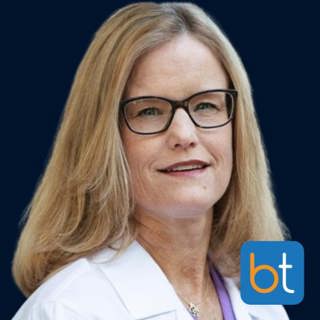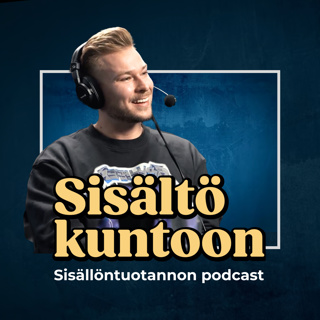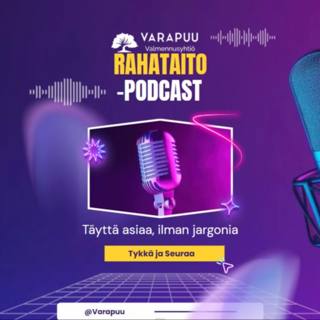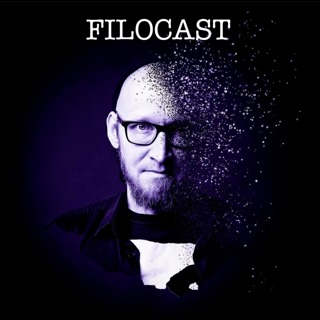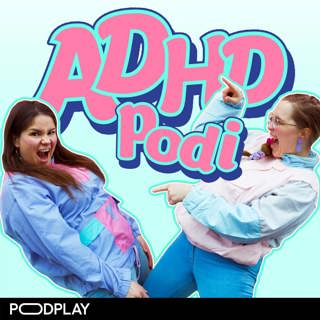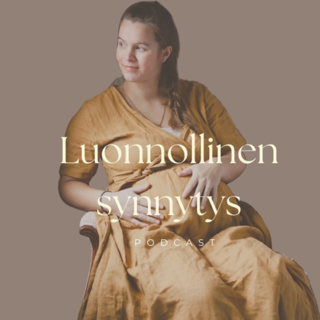
Ep. 210 Modern Vertebral Augmentation with Dr. Doug Beall
In this episode, host Dr. Jacob Fleming interviews Dr. Douglas Beall, interventional radiologist, about the latest advances in vertebral augmentation, how to reduce complications, and tips for producing successful and sustainable outcomes. --- CHECK OUT OUR SPONSOR RADPAD® Radiation Protection https://www.radpad.com/ --- EARN CME Reflect on how this Podcast applies to your day-to-day and earn AMA PRA Category 1 CMEs: https://earnc.me/PdIxV5 --- SHOW NOTES In this episode, host Dr. Jacob Fleming interviews Dr. Douglas Beall, interventional radiologist, about the latest advances in vertebral augmentation, how to reduce complications, and tips for producing successful and sustainable outcomes. This is the third installment of our 4-part BackTable VI series on osteoporosis treatment. Dr. Beall begins by discussing the newest technique in the treatment of vertebral compression fractures, screw-assisted vertebral augmentation, with emphasis on how it can decrease the excessive vertebral motion induced by a fracture. He uses the three-column approach (anterior, middle, and posterior column) using SpineJack in the front and pedicle screws in the back. They also discuss vertebral body stents and shaped balloons, two emerging technologies that will be available soon. Next, they discuss complications in kyphoplasty and vertebral body augmentation. Dr. Beall shares how to recognize various types of cement extravasation. Importantly, if the cement starts to form a lenticular shape, stop injecting because continued injection will cause the cement to enter the spinal canal. The lenticular, biconvex shape that occurs with this pattern is due to the anterior epidural ligaments and midline anterior epidural ligament. He says to let the cement harden in the anterior epidural space once you reach the basivertebral plexus, and then continue injecting. Extravasation, to some degree, is normal, and recognizing where it is going is the key to avoiding complications. We end by discussing how to improve outcomes. Dr. Beall says that injecting more cement is the best way to produce better outcomes. Lastly, he adds that filling the cleft is the best way to achieve the greatest degree of pain reduction, which ultimately is what indicates a successful outcome. --- RESOURCES Dr. Douglas Beall Twitter: @DougBeall BackTable VI Episode 94, Innovation in Spine Interventions with Dr. Douglas Beall: https://www.backtable.com/shows/vi/podcasts/94/innovation-in-spine-interventions Cianfoni publication on Stent-Screw-Assisted Internal Fixation (SAIF): https://jnis.bmj.com/content/11/6/603 Venmans publication on Pulmonary Emboli during Vertebroplasty: www.ajnr.org/content/29/10/1983
25 Touko 202234min

Ep. 209 Primer on Medical Treatment of Osteoporosis and Non-surgical Management with Dr. Doug Beall
In this episode, host Dr. Jacob Fleming interviews Dr. Douglas Beall about current osteoporosis diagnosis criteria, his treatment algorithm, and recent data showing efficacy of osteoanabolic agents and vertebroplasty. --- CHECK OUT OUR SPONSOR DI4MDs Protect your most valuable asset, the skill and ability to practice your medical specialty. Be prepared by establishing a specialty specific disability insurance policy from the experts at DI4MDs. Contact them today at www.Di4MDS.com or call 888-934-4637. --- EARN CME Reflect on how this Podcast applies to your day-to-day and earn AMA PRA Category 1 CMEs: https://earnc.me/oQMiwe --- SHOW NOTES In this episode, host Dr. Jacob Fleming interviews Dr. Douglas Beall about current osteoporosis diagnosis criteria, his treatment algorithm, and recent data showing efficacy of osteoanabolic agents and vertebroplasty. This is the second installment of our 4-part BackTable VI series on osteoporosis treatment. As we continue our conversation from Ep. 208, Dr. Beall outlines his typical follow up protocol for his patients. This includes DEXA scans in the first and second years, prescriptions for antiresorptive and/or osteoanabolic agents, and possible Romosozumab injections. Dr. Beall emphasizes that thoroughness is key to treating the disease process, and each encounter is a reimbursable event that can benefit both the patient and the practice. Next, we shift to talking about the American Association of Clinical Endocrinologists (AACE) diagnostic criteria for osteoporosis. Dr. Beall highlights the fact that there are 4 categories that encompass information about DEXA (T-scores), FRAX scores, and fragility fractures. Sole reliance on DEXA score cutoffs can lead to under-diagnosis and increased mortality risk for patients. Notably, any past fragility fracture in a postmenopausal woman is sufficient for an osteoporosis diagnosis. Dr. Beall shares that 82% of patients with fragility fractures do not have T-scores in the osteoporotic range. On the other hand, there are confounding factors that can give a falsely elevated T-score. As we shift to discussing medications for osteoporosis, Dr. Beall emphasizes the need to consider the order in which they are prescribed. He advocates for initially using osteo anabolics (specifically a PTH analog) for 2 years to build up bone mineral density, and then maintaining that density with antiresorptives afterwards. He notes that with the risk of bisphosphonate side effects like osteonecrosis of the jaw and atypical femur fracture, it is unwise to prescribe these antiresorptives as an initial treatment. Finally, we begin the conversation about vertebroplasty and recent trials proving its efficacy in reducing pain and improving function for patients. Tune in to our next 2 installments to learn about Dr. Beall’s clinical pearls for vertebral augmentation! --- RESOURCES Dr. Douglas Beall Twitter: @DougBeall BackTable VI Episode 94, Innovation in Spine Interventions with Dr. Douglas Beall: https://www.backtable.com/shows/vi/podcasts/94/innovation-in-spine-interventions Comparison of thoracolumbosacral orthosis and no orthosis for the treatment of thoracolumbar burst fractures: interim analysis of a multicenter randomized clinical equivalence trial (2009): https://pubmed.ncbi.nlm.nih.gov/19769510/ Comparative study of the treatment outcomes of osteoporotic compression fractures without neurologic injury using a rigid brace, a soft brace, and no brace: a prospective randomized controlled non-inferiority trial (2014): https://pubmed.ncbi.nlm.nih.gov/25471910/ The efficacy of conservative treatment of osteoporotic compression fractures on acute pain relief: a systematic review with meta-analysis (2015): https://pubmed.ncbi.nlm.nih.gov/25725810/ Clinical effect of balloon kyphoplasty in elderly patients with multiple osteoporotic vertebral fracture (2019): https://pubmed.ncbi.nlm.nih.gov/30837413/
24 Touko 202245min

Ep. 208 Why We Need to Be Treating Osteoporosis for Our Compression Fracture Patients with Dr. Doug Beall
In this episode, host Dr. Jacob Fleming interviews Dr. Douglas Beall about the importance of interventional radiologists stepping up to address the entire picture of osteoporosis and taking the initiative to treat the underlying cause of the disease. --- CHECK OUT OUR SPONSOR Laurel Road for Doctors https://www.laurelroad.com/healthcare-banking/ --- EARN CME Reflect on how this Podcast applies to your day-to-day and earn AMA PRA Category 1 CMEs: https://earnc.me/xVGPFx --- SHOW NOTES In this episode, host Dr. Jacob Fleming interviews Dr. Douglas Beall about the importance of interventional radiologists stepping up to address the entire picture of osteoporosis and taking the initiative to treat the underlying cause of the disease. This is the first installment of our 4-part BackTable VI series on osteoporosis treatment. Dr. Beall starts by stating his mission: he not only performs vertebral augmentation; he also offers DXA scans and T-score analysis, prescribes osteoanabolic agents, and follows up with patients over time. Dr. Beall cites data showing that both vertebral augmentation and osteoporosis medications can improve patients’ quality of life and significantly reduce mortality. Even with newer osteoanabolic agents like Teriparatide, Abaloparatide, and Romosozumab being approved for treatment, osteoporosis screening rates have dropped in recent years. This is a pressing concern, since osteoporosis is a growing societal burden, given the increasing population of elderly patients. Furthermore, treatment of osteoporosis allows patients to regain mobility, which reduces comorbidities. We finish this episode by discussing how IRs have the potential to learn about osteoanabolic medications, counsel patients, and take ownership of this disease process. --- RESOURCES Dr. Douglas Beall Twitter: @DougBeall BackTable VI Episode 94, Innovation in Spine Interventions with Dr. Douglas Beall: https://www.backtable.com/shows/vi/podcasts/94/innovation-in-spine-interventions Number Needed to Treat with Vertebral Augmentation to Save a Life: http://www.ajnr.org/content/early/2019/12/19/ajnr.A6367 Risk of Mortality Following Clinical Fractures: https://pubmed.ncbi.nlm.nih.gov/11069188/ Prospective and Multicenter Evaluation of Outcomes for Quality of Life and Activities of Daily Living for Balloon Kyphoplasty in the Treatment of Vertebral Compression Fractures: The EVOLVE Trial: https://journals.lww.com/neurosurgery/Fulltext/2019/01000/Prospective_and_Multicenter_Evaluation_of_Outcomes.20.aspx
23 Touko 202231min

Edición Esp: Transplante de Higado: Nuestro Rol como Radiólogos Intervencionistas con Dr. Pilar Bayona y Dr. Alejandro Mejia
En este episodio de BackTable, Dra. Gina Landinez habla con el Dr. Alejandro Mejia, cirujano trasplante de Methodist Dallas, y la Dra. Pilar Bayona, radiologista intervencionista de UT Southwestern, sobre la colaboración entre los cirujanos trasplantes y los radiólogos intervencionistas durante los trasplantes de hígados. Hablan sobre el papel de los radiólogos intervencionistas durante los periodos críticos de trasplante: el preoperatorio, el perioperatorio, y el postoperatorio. The CME experience for this Podcast is powered by CMEfy - click here to reflect and unlock credits & more: https://earnc.me/rkKX8a --- CHECK OUT OUR SPONSOR Laurel Road for Doctors https://www.laurelroad.com/healthcare-banking/
20 Touko 202247min

Ep. 207 The Man Behind the Sheath: How Dr. Gary Ansel went from almost TV repairman to Endovascular Innovator
We talk with interventional cardiologist Dr. Gary Ansel about his career in medical device innovation, including the development of the Ansel Guiding Sheath and the Pounce Thrombectomy System (which was recently acquired by Surmodics, Inc.). --- EARN CME Reflect on how this Podcast applies to your day-to-day and earn AMA PRA Category 1 CMEs: https://earnc.me/3y4ysO --- SHOW NOTES In this episode, our host Dr. Bryan Hartley interviews interventional cardiologist Dr. Gary Ansel about his career in medical device innovation, including the development of the Ansel Guiding Sheath and the Pounce Thrombectomy System (which was recently acquired by Surmodics). Dr. Ansel describes his early career and how he identified a clinical need within the realm of renal stenting. His collaboration with Cook Medical evolved into a guiding sheath that has now become widely popular. Dr. Ansel stresses the importance of ensuring that a device has a value proposition for all stakeholders– patients, doctors, hospitals, and payers. The added cost of a new device must provide overall benefits to the procedure. Next, we discuss Dr. Ansel’s development of a percutaneous thrombectomy system over the course of twelve years, multiple patent applications, and various obstacles. Throughout this process, Dr. Ansel highlights the benefits of having the expertise of a knowledgeable business team. He also tells new entrepreneurs to focus on de-risking their ideas with patents and early sales, in order to make their offerings more attractive to potential investors and acquirers. --- RESOURCES Ansel Guiding Sheath: https://www.cookmedical.com/products/dfdfc483-b37b-49f2-8a78-937bf16ae831/ Pounce Thrombectomy System: https://pouncesystem.com/
16 Touko 202255min

Optimizing LGBTQ+ Care with Shane Snowdon
As part of our Health Equity Series Dr. Vishal Kumar talks with Shane Snowdon about current challenges in healthcare for LGTBQ+ patients, how we can improve communication, reduce fear and misunderstanding, and be a true patient advocate, starting with our own education. The CME experience for this Podcast is powered by CMEfy - click here to reflect and unlock credits & more: https://earnc.me/moP2eJ --- SHOW NOTES In this episode, guest host Dr. Vishal Kumar and educator/advocate Shane Snowdon discuss unique barriers to care for LGBTQ+ individuals, as well as strategies for healthcare providers can create nonjudgemental environments for this community. Shane starts by outlining the history of LGBTQ+ healthcare in the United States, noting that it first came to public attention in the midst of the HIV/AIDS epidemic of the 1980s. In the 2020s, the major concerns for LGBTQ+ health access have been centered around gender-affirming care for youths and adults. Shane emphasizes that the process of coming out to healthcare providers empowers LGTBQ+ individuals to “claim an identity that they had been taught to dispense and conceal.” The concern is that when they become known as LGBTQ+, will the provider and system treat them and their families with the respect and care with which they treat people who do not identify as LGBTQ+? Shane says that discrimination in healthcare makes it more likely for patients to delay their screenings and follow up appointments, leading to less engagement in care and worse medical outcomes. Next, we shift to discuss specific patient-provider communication techniques. Shane addresses the fact that there will be moments when providers make the mistake of misgendering patients. Shane advises providers to acknowledge the mistake in the moment, apologize, and affirm the patient’s self identity. This well-meaning approach can help build trust and give the provider an opportunity to specify the patient’s preferred identifiers in the electronic health record. Furthermore, we discuss the unique role of the radiologist in providing LGBTQ+ care, as it is often radiologists who learn that someone is transgender, through imaging. Radiologists can reach out to the patient in a sensitive and respectful way and notify their colleagues of the need for clarification in the electronic medical record. Finally, we discuss healthcare systems and the need for foundational policies, integrated education about LGBTQ+ patients across all healthcare topics, and adequate resources for LGBTQ+ staff and patients. Shane highlights the Healthcare Equality Index, a specific tool that healthcare systems can use to self-assess their level of health equity and learn additional strategies to make their care more LGBTQ+-friendly. --- RESOURCES Healthcare Equality Index: https://www.hrc.org/resources/healthcare-equality-index Transgender Patients: What Radiologists Need to Know: https://pubmed.ncbi.nlm.nih.gov/29629811/ Physicians as Political Pawns– The Texas Directive on Gender-Affirming Care and Other Moves: https://www.nejm.org/doi/full/10.1056/NEJMp2203746 Affordable Care Act, Section 1557: https://www.hhs.gov/civil-rights/for-individuals/section-1557/index.html The Trevor Project: https://www.thetrevorproject.org/ Gender Spectrum: https://genderspectrum.org/ The Joint Commission’s LGBTQ+ Field Guide: https://www.jointcommission.org/-/media/tjc/documents/resources/patient-safety-topics/health-equity/lgbtfieldguide_web_linked_verpdf.pdf?db=web&hash=FD725DC02CFE6E4F21A35EBD839BBE97&hash=FD725DC02CFE6E4F21A35EBD839BBE97 Transgender and Gender Diverse Health Care: The Fenway Guide: https://www.amazon.com/Transgender-Gender-Diverse-Health-Care-ebook/dp/B09648R5HG
13 Touko 202253min

Ep. 206 Improving Workflow Efficiency: Starting with Paracentesis with Dr. Karen Brown
Dr. Karen Brown explains how she improved paracentesis workflow by creating a service that has shortened procedure time, decreased hospital length of stay, and improved patient and referring provider satisfaction. --- CHECK OUT OUR SPONSOR GI Supply RenovaRP Paracentesis Pump https://www.gi-supply.com/products/paracentesis-management/renovarp-pump/ --- SHOW NOTES In this episode, host Dr. Aaron Fritts interviews Dr. Karen Brown, Section Chief for Interventional Radiology at the University of Utah about how she improved workflow by creating a paracentesis service that has shortened procedure time, decreased hospital length of stay, and improved patient and referring provider satisfaction. Dr. Brown begins by reviewing the standard workflow for performing paracentesis before implementing her new program. She says paracentesis used to be done in a procedure room, and would often take quite long, delaying other procedures that were a better use of the room. Though a simple procedure, paracentesis can take quite some time to fully drain the ascites. Dr. Brown and colleagues conducted a trial that compared standard wall suction to the Renova pump. Patients preferred Renova due to less capturing of bowel and adjusting of the catheter. They found that by using the Renova pump, they could cut the procedure time down by almost half. She says that hiring an advanced practice provider (APP) that was designated to paracentesis was key to improving the efficiency of the daily IR workflow. The other advantage to Renova is its portability. She says that this helped her get paracenteses out of procedure rooms because the APP can now do paracenteses anywhere, even at the bedside for an inpatient. We end by discussing recommendations for IRs who are interested in improving efficiency in their practices. Dr. Brown says that the key is to make the case to administrators or purchasers that procedure room time is money. By speeding up the process for paracentesis, she has also been able to increase the number of paracenteses they do per year and decrease hospital length of stay for patients who are waiting for a paracentesis before discharge, which has saved both time and money. --- RESOURCES Dr. Brown’s publication in Diagnosic and Interventional Radiology: https://www.dirjournal.org/en/paracentesis-faster-and-easier-using-the-renovarp-pump-132424 RenovaRP® Paracentesis Pump: https://www.gi-supply.com/products/paracentesis-management/renovarp-pump/
9 Touko 202229min

Ep. 205 Update on Reimbursement Cuts for the OBL/ASC with Dr. Jim Melton and Dr. Blake Parsons
In this episode Vascular Surgeon Jim Melton and Interventional Radiologist Blake Parsons give us the lay of the land on recent reimbursement cuts in the OBL/ASC space, including peripheral artery disease treatments and embolization procedures, as well as projections of what to expect in the next few years. --- CHECK OUT OUR SPONSOR Boston Scientific Eluvia Drug-Eluting Stent https://www.bostonscientific.com/en-US/medical-specialties/vascular-surgery/drug-eluting-therapies/eluvia/eluvia-clinical-trials.html?utm_source=oth_site&utm_medium=native&utm_campaign=pi-at-us-de_portfolio-hci&utm_content=n-backtable-n-backtable_site_eluvia_1&cid=n10008043 --- SHOW NOTES In this episode, host Dr. Aaron Fritts interviews interventional radiologist Dr. Blake Parsons and vascular surgeon Dr. Jim Melton about navigating recent Medicaid reimbursement cuts in their hybrid Office Based Lab (OBL) and Ambulatory Surgery Center (ASC), CardioVascular Health Clinic. This episode largely follows a question and answer format, where our guests respond to previously-submitted audience questions. The guests start by outlining recent vascular surgery and interventional radiology reimbursement cuts from 2022, as well as sharing information on future cuts through 2026. Most cuts are PAD-focused, but they also include pain management procedures like kyphoplasty. Dr. Parsons advises IRs to think about diversifying their practices to encompass procedures outside of PAD. He summarizes the average profits generated in various types of IR cases. He also predicts that there will be more reimbursement cuts on embolization cases, as prostate and geniculate embolizations become more popular. To protect profit margins by means of cost reduction, the doctors negotiate with vendor pricing and try to leverage disposables against capital. Dr. Melton describes the current political landscape and physician advocacy efforts. While industry has started to position themselves to help advocate for OBLs and ASCs, Dr. Melton believes that industry and physicians should be more politically active. He encourages physicians to get involved with their medical societies and reach out to local representatives and senators in order to highlight the benefits of patient care in an OBL/ASC setting– faster recovery, lower risk of infection, and overall lower cost for the healthcare system. --- RESOURCES CardioVascular Health Clinic: https://cvhealthclinic.com/ SIRPAC: https://www.sirweb.org/advocacy/sirpac/ OEIS: https://oeisociety.com/
6 Touko 202236min
